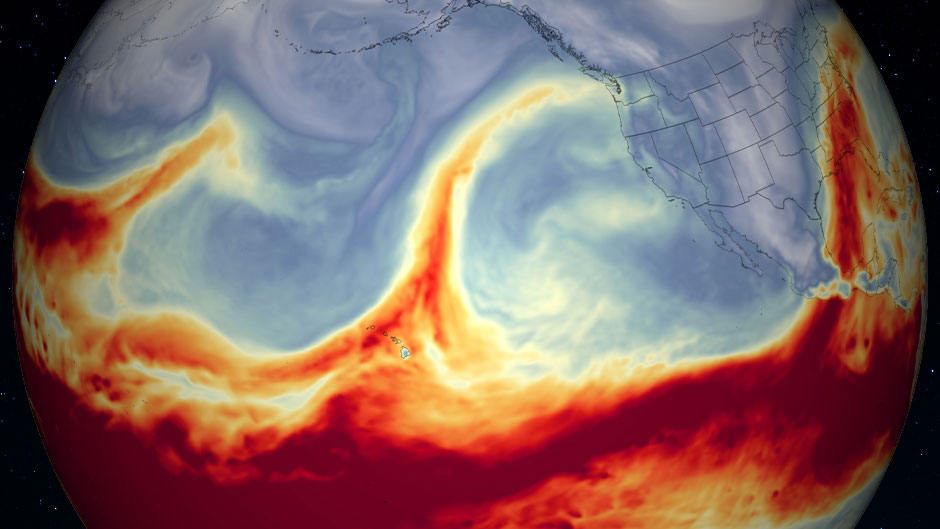Atmospheric rivers. Until the deluge of record-setting rain and storms that inundated California and the Pacific Northwest earlier this week, many people were probably unfamiliar with the term.
To be fair, the atmospheric river that overwhelmed the West Coast last week didn’t act alone. It also collided with a bomb cyclone before coming onshore on Sunday, unleashing strong winds and record-breaking rain in the San Francisco Bay area, and snow, mudslides, and power outages in a region still recovering from a very active wildfire season.
But the extreme weather left many wondering: what are atmospheric rivers, and what do they do?
Atmospheric rivers are tubes or ribbons of water vapor that evaporate from the equator and surge up into the atmosphere over the ocean, flowing toward the poles, according to meteorologist Ben Kirtman, professor of atmospheric sciences at the University of Miami Rosenstiel School of Marine and Atmospheric Science. Although a few head toward the South Pole, the majority meander from the southwest to the northeast. In the Pacific Ocean, this means they head toward the western coast of the United States, and in the Atlantic Ocean, they drift up toward western Europe.
Discovered in 1992 by a team of meteorologists, atmospheric rivers serve as a pathway for moisture to move around the globe. And they contain as much water as 25 to 30 Mississippi Rivers, Kirtman said. They also provide up to 50 percent of California’s annual rainfall, so atmospheric rivers are important climatically, as well as locally.
“There are maybe four to six atmospheric rivers around the world at any one time and they cover about 10 percent of the surface area of the globe,” said Kirtman, who also directs the Cooperative Institute for Marine and Atmospheric Studies. “But they actually produce 90 percent of the transport moisture from the deep tropics to the mid-latitudes.”
Since atmospheric rivers are typically most active in the winter, they also coincide with other climate patterns that can impact global weather—the El Niño/La Niña effect. These phenomena can have a major influence on the number of atmospheric rivers that develop, Kirtman said. Currently, meteorologists believe we are experiencing a La Niña pattern for a second consecutive year. La Niña years are typically characterized by less rainfall and more drought conditions, which means winters in the southern half of the United States are drier and often warmer. In contrast, the upper half of the country experiences more precipitation, cooler temperatures, and fewer atmospheric rivers during a La Niña winter.
Here, Kirtman elaborates on the characteristics of atmospheric rivers, and explains how La Niña and climate change could impact them.




